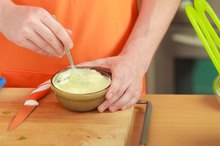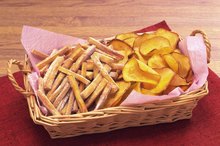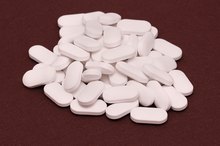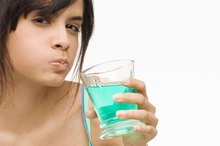Sodium Bicarbonate and Bicarbonate of Soda
Sodium bicarbonate and bicarbonate of soda are one in the same -- you may know it better as baking soda. This chemical compound has uses that go beyond acting as a leavening agent in your baked goods. It's a safe ingredient in food, but if you're using it as medicine, talk to your doctor.
About Sodium Bicarbonate
Sodium bicarbonate is an odorless white powdered substance that is a mixture of sodium and hydrogen carbonate. It has a bitter taste and is considered alkaline, which means it has a high pH. Sodium bicarbonate is used as a buffering agent and as a source of electrolytes. It is considered nontoxic.
In Baked Goods
Salt, Sodium, & Inflammation
Learn More
In order to be effective as a leavening agent, sodium bicarbonate has to be combined with an acid, such as cream of tartar or milk. It works by producing carbon dioxide, which creates air bubbles and causes the mixture to expand.
When it comes to sodium bicarbonate in baked goods, more is not better, according to BBC Good Food. Adding more baking soda than the recipe calls for may cause an off taste and color, as well as lead to a collapsed product.
Medicinal Uses
In addition to helping improve the texture and lightness of your baked goods, sodium bicarbonate is also used medicinally. Due to its alkalizing properties, sodium bicarbonate is used as an antacid to treat heartburn and indigestion. It is typically a prescribed medication, although you can also get it over the counter. You should take sodium bicarbonate only as directed by your doctor.
Source of Sodium
How to Substitute Olive Oil for Veggie Oil in a Salad Dressing
Learn More
Whether putting sodium bicarbonate in your baked goods or using it medicinally, you're adding sodium to your diet. One teaspoon of sodium bicarbonate has 1,259 milligrams of sodium. While the amount used in baked goods is small and distributed between each portion, it's important to know that you're adding more sodium to your diet.
A high intake of sodium from all sources is associated with high blood pressure, according to the Dietary Guidelines for Americans 2010. Keep your intake to less than 2,300 milligrams a day, or less than 1,500 milligrams if you already have high blood pressure.
Related Articles
References
Writer Bio
Jill Corleone is a registered dietitian and health coach who has been writing and lecturing on diet and health for more than 15 years. Her work has been featured on the Huffington Post, Diabetes Self-Management and in the book "Noninvasive Mechanical Ventilation," edited by John R. Bach, M.D. Corleone holds a Bachelor of Science in nutrition.








